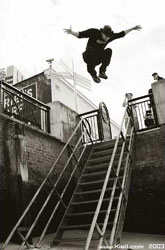Sports
Sports
1. Cele lekcji
a) Wiadomości
Uczeń zna wybrane słownictwo dotyczące sportu.
b) Umiejętności
Uczeń:
używa wybranych słów dotyczących sportu,
ćwiczy umiejętność mówienia,
czyta ze zrozumieniem tekst i uzupełnia w nim luki.
2. Metoda i forma pracy
Metoda: podejście komunikacyjne, ćwiczebna
Forma: praca indywidualna, praca w parach
3. Środki dydaktyczne
Karty pracy z przygotowanymi ćwiczeniami
4. Przebieg lekcji
a) Faza przygotowawcza
Czynności organizacyjne.
Nauczyciel wprowadza temat lekcji. Pyta uczniów: Do you like doing/ watching sports? What sports do you enjoy playing most? Do you prefer team or individual sports? What sports would you like to try? Are there sports you like watching? Do you like going to sport events or do you prefer watching them at home? Which sports are the most / least popular in our country? Why do you think so? How important is physical education in schools? Should we resign from these lessons? Why?
b) Faza realizacyjna
Nauczyciel rozdaje karty pracy. Uczniowie wykonują ćwiczenie pierwsze (załącznik 1).
Po sprawdzeniu ćwiczenia uczniowie przechodzą do ćwiczenia drugiego (załącznik 2). W parach mają omówić podobieństwa i różnice wymienionych sportów.
Nauczyciel pyta: Do you know any extreme sports? What can you see in the picture in exercise three?
Uczniowie czytają tekst o Le Parkur, zastanawiając się, jakie słowa zostały usunięte z tekstu (załącznik 3).
Uczniowie sprawdzają, czy poprawnie wykonali ćwiczenie. Nauczyciel zadaje pytania: Would you like to try this sport? Does the article in general try to encourage or discourage Le Parkour?
Uczniowie pracują w 3‑4-osobowych grupach. Mają opisać sport, biorąc pod uwagę: gdzie się go trenuje czy uprawia, co jest potrzebne, by go uprawiać, jaki jest cel gry, podstawowe zasady, co należy zrobić, by zostać dobrym graczem.
c) Faza podsumowująca
Uczniowie przedstawiają swoje opisy. Zastanawiają się wspólnie, który opis był najlepszy i dlaczego.
5. Bibliografia
Acklam R., Burgess S., First Certificate Gold, Addison Wesley Longman Limited, Edinburgh 1996.
http://news.bbc.co.uk/1/hi/entertainment/tv_and_radio/1939867.stm
6. Załączniki
a) Karta pracy ucznia
Załącznik 1.
Match the items with sports. One item can go with more than one sport.
gloves, a net, a set, a ring, a goal, a racket, a round, a pitch, a court, a referee, to serve, to kick, a ball, a training, to dribble, team, a green
1. tennis | 2. football | 3. basketball | 4. boxing | 5. volleyball |
Odpowiedzi do ćwiczenia: 1. tennis: gloves, a net, a racket, a court, to serve, a ball, a training 2. football: gloves, a goal, a pitch, a green, a referee, to kick, a ball, a training, to dribble, a team, a green, 3. basketball: a ball, a training, a team, 4. gloves, a ring, a training, a round, 5. volleyball: a net, a set, a ball, to serve, a training, team
Załącznik 2.
Talk with your partner about the similarities and differences of given pairs of sports.
a) baseball / basketball
b) sumo / wrestling
c) tennis / table tennis
d) football / soccer
e) weightlifting / gymnastics
f) swimming / synchronized swimming
Załącznik 3.
Describe the picture. Read the text and think of words that are missing. One for one space only.

Źródło: http://www.japandesign.ne.jp/HTM/REPORT/london_smoke/13/index7.html
Le Parkour is the art ………….(1)freestyle urban movement. Basically, it's an extreme sport like BMX biking or skateboarding ………..(2) you use your body. Remember the Nike commercial where the guy is getting chased …………. (3) the chicken? Or the Toyota Scion commercial ………(4) the two guys are racing the cars? That's it. Started nearly 20 years ago by childhood friends David Belle and Sebastien Foucan, le parkour has now spread …………..(5) France and to other countries ……….(6) England and even Slovakia. It's more …………(7) just jumping from building to building though. There is a philosophy, one that teaches no obstacle is too great …………(8) overcome. Which is definitely a good thing to learn. In 2003, there was a fashion for British TV documentary called „Jump London” in …………….. (9) Foucan and fellow traceur Jerome Ben Aoues joined a team ………(10) London and literally jumped their …………(11) through the city. The doc was …….. (12) popular that the made a sequal, „Jump Britain” It should be stressed however that this is not something just anyone can do. It ………. (13) look easy, but it's not (trust me...me and some friends tried it back in the day in high school...running across walls and jumping from high places is not a good idea if you don't know ………….. (14) you're doing. I have video footage to prove it). On most of the websites there are disclaimers telling you not to be a dumbass and jump ……….(15) a roof. But when done properly, it is a beautiful thing...it proves that maybe we can do more with just our bodies than we ever though possible.
Odpowiedzi do ćwiczenia: 1. of, 2. except/but, 3.by, 4. where, 5. through/ around, 6. like 7. than, 8. to, 9. which, 10. in, 11. way, 12. so, 13. may/can/could, 14. what, 15. off
b) Zadanie domowe
Napisz krótki życiorys słynnego sportowca.
7. Czas trwania lekcji
45 minut
8. Uwagi do scenariusza
brak